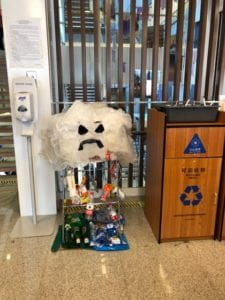Shanghai’s Informal Waste Management Report
-Landfilling is Shanghai’s most common form of waste treatment
-Shanghai plans to become landfill-free by 2020
-Incinerators burn waste to turn a turbine and produce electricity
-Incinerators release toxins into the environment and harm people’s health
-Swapping Points: non-licensed areas on the street where informal individuals and recyclers gather to buy and sell material from other recyclers
-Small collection centers: these sites pay informal and opportunistic collectors by weight for the waste collected
-Large consolidation center: These centers are the last points in the collection chain before
transportation to processing centers
-Processing Centres: These are the endpoint in the material life with many
present in nearby provinces of Jiangsu and Zhejiang. This is the side of the informal sector that is the least transparent
and in many cases little is known about the quality of the
treatment.
Sustainability MIT Press
-Triple E’s of Business: Environment, Economy, Equity
-Building a community as a form of social capital
-Sustainable communities consist of collections of people who, when interacting, develop a sense of community, a sense of connectedness to others, and a sense of personal and collective well-being.
-Cities can achieve sustainable goals through design and public policy.
-Mainstream economics vs. sustainable economics
-Common pool resources: resources available to everyone
-“Tragedy of the Sources”: when the resources become depleted. EX: overfishing in the Atlantic
-The problem starts when a cattle ranchers put as many cows on grazing areas as they want, but over time they want to earn more profit so they keep adding more cattle to the area and the plant life slowly declines due to the overpopulation of inhabitants on the graze.
Agatha: Trash Installation in the Cafe
The thought of creating an art piece out of trash was daunting. I had no idea where to begin because I was scared I couldn’t shape the materials to my particular liking. My group and I decided that we had enough bubble wrap to make a cloud, so there begins our project with a cloud named Agatha. After wrapping up styrofoam and bubble wrap into a cloud formation, we began to hang trash bottles on cords of plastic, bags, and we even used an old headphone set. This represented acid rain that is contaminated by our landfills that leak into the oceans and begin the precipitation, evaporation, and condensation cycle. We thought it was important to use commonly known brands that we see every day to connect with our audience and relate a more meaningful message. We then did a runoff land and water part that goes directly under Agatha (the cloud) which expresses the rain and trash that runs off from landfills and into the ocean. Agatha also has a set of eyes and melancholy eyebrows that denotes how sad she is. I would have liked to see her hung up in the cafe to give the installation the full effect but once we sat her down in a chair it was fine. Just something we need to plan further next time.



Leave a Reply